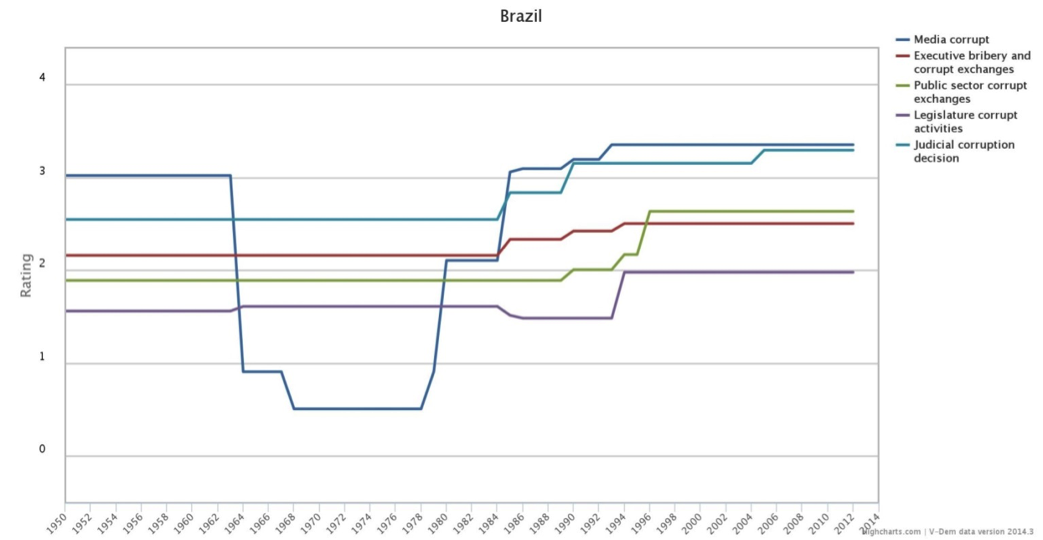International Anti-Corruption Day
By: V-Dem Staff
Dec 17, 2015
Corruption within the media was widespread from the beginning of the 1960s to the end of the 70s, with scores reflecting how journalists, publishers, and broadcasters routinely altered news coverage in exchange for payments. After a decrease in media corruption levels in the 80s and 90s the country received a score of just above 3 in 2012, suggesting that it is not normal for journalists, publishers, and broadcasters to alter news coverage in exchange for payments in more recent years, although it happens occasionally, without anyone being punished.
In terms of the other indicators in the graph, there is a gradual decrease in corruption in from the early 80s to the mid-90s. In recent years, the corruption level within the judiciary stands at approximately the same level as for the media, suggesting that individuals or businesses usually do not make undocumented extra payments or bribes in order to speed up or delay judicial proceedings or to obtain a favorable judicial decision.
In terms of executive corruption, the slightly lower score of between 2 and 3 implies that in recent years, members of the executive, or its agents, occasionally grant favors in exchange for bribes, kickbacks, or other material inducements.
The similar score on public sector corruption means that between a small minority and half of public sector employees engage in petty corruption from time to time in Brazil. The lowest score, indicating the highest level of corruption is received in terms of legislature corruption, where members of the legislature sometimes abuse their position for financial gain.
In the first ever public V-Dem dataset to be released by the 4th of January next year, three corruption indices will be available. In addition, Brazil is one of the 76 countries to be updated in March next year so stay tuned for fresh data on corruption in Brazil.


